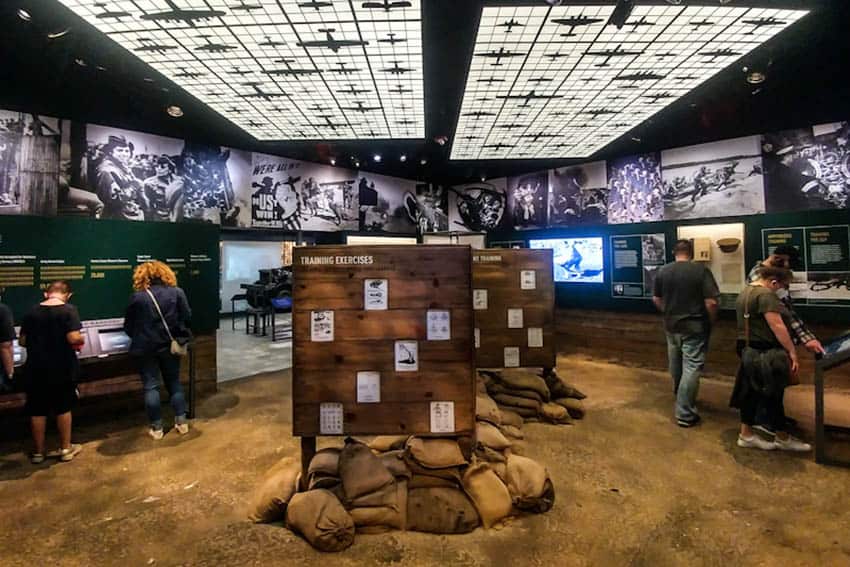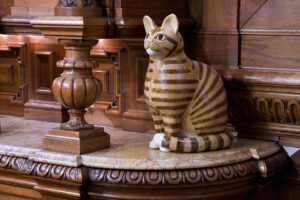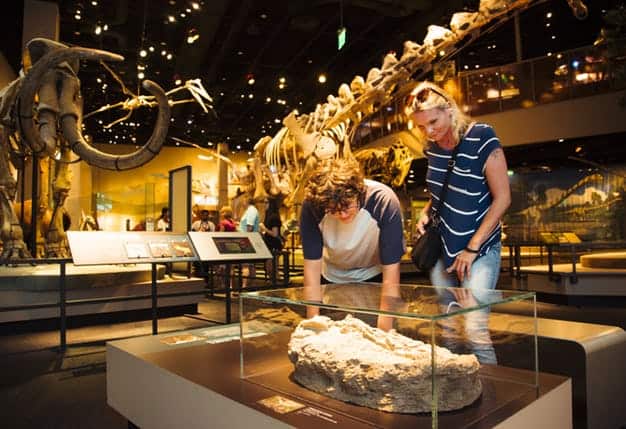By Hunter Styles
Flamenco: A Deep Well of Music
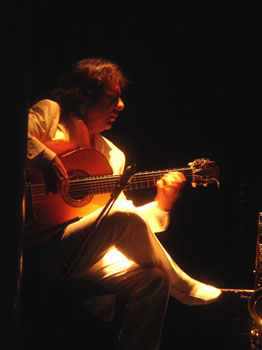
Travelers familiar with the Andalusia region won’t be surprised to find Moorish influence woven into the design as well. Those who have walked within the Alhambra, Granada’s expansive fortress, or the Mezquita, Córboda’s cavernous mosque, may recognize in flamenco, too, traces of this unique heritage.
In broad terms, the Moors were North Africans, predominantly Muslim, of Arab and Berber lineage, who made their way up into Iberia in the late Middle Ages. Over the centuries, this land has absorbed the sounds and flavors of this long Moorish conquest and settlement.
Can’t quite pick out the classic Arabic traits in the music? The museum is staffed with a group of uniquely warm, consistently friendly guides to take the walk with you and prompt some helpful dialogue.
Our own guide reminds us that despite all the blending of styles, early flamenco was distinctly Gitano – that is, born from Spain’s Gypsy population. During the earliest flamenco shows, the rhythm was beaten out on the floor with a long stick. The only sounds one would hear would have been the deep, quavering scales of the singer and the forceful clacking of shoes.
It is remarkable, in fact, that flamenco expanded so far from its Gitano origins – transcending the ethnic persecution of these creators – to become the nationally prized and internationally admired art form it is today. It can be hard to trace flamenco’s growth at times, in part because Gitanos maintain an oral history.
New generations learned these folk dances by witnessing them time and again in the local community. No surprise, then, that flamenco and Sevillanas retain an air of spontaneity to this day.
Consider the street dancing during the Feria in April. Classical ballet this is not. Here, beauty and agility are not required. It’s the dance of the people – quick, communal, celebratory. It’s not always glamorous. But sometimes art is best served without the fuss.
Dresses and Daggers

The remaining rooms in the permanent exhibition reveal just how wide the global music spectrum can be, and how elegantly it all can meld into a solid, beloved sound. Bolero music and dance helped to shape flamenco.
The Arabic and Andalusian roots are inflected with Sephardic and Gypsy traditions. Even Cuban and Latin American styles during the birth of the Americas have returned across the Atlantic to shape flamenco.
In one room we watch a wonderfully filmed video, projected large, of professional dancers demonstrating a variety of steps and styles. These are members of founder Cristina Hoyos’ own group: the Andalusia Flamenco Ballet. Their living illustrations prove just how wide a range of emotions and kinetics is required of the professional flamenco dancer.
Another room showcases period costumes and musical artifacts. Here we see wraps and hats, dresses and suits, fans and castanets. Hoyos herself used some of these props in her screen performances such as “Blood Wedding” and “Carmen,” both envisioned by the magnificent director Carlos Saura. Notably, the knife from the beautiful, frightening fight scene in “Blood Wedding” is on display here.
The elegance of these objects is bound to impress. Visitors inclined toward travel mementos – and, possibly, collecting some props for their own burgeoning dance careers – will find everything they may hope for in the museum’s impressive gift shop just inside the main entryway of the building.
A wide array of souvenirs such as books and postcards are readily available, as well as CDs and DVDs (I recommend any film by Carlos Saura or any album by the legendary guitarist Paco de Lucia). A variety of more unique gifts are also available, among them guitars, dresses, shoes, and some lovely hand-made jewelry.
A Memorable Performance
In spirit, our tour is the build-up to the evening’s main event – the performance itself.
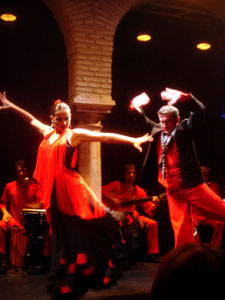
After a brief welcome and introduction from the museum, the Compañía Flamenca Antonio Andrade jumps into the show with their hearts on their sleeves. The guitarist tonight is Andrade himself, playing an eclectic music set. Other musicians flesh out the sound with drums, saxophone, and flute.
Notable among his comrades is Francisco J. Orozco – or “Yiyi” – who sings pristinely high notes and wavering, haunting melodies. His voice hovers high in the room, alone, plaintive and exposed.
Tonight it is Esther Vélez and Antonio Granjero who glide regally to the front of the stage. It is only when the dancers appear that the dense, furious nature of flamenco dance is driven home to us. If Orozco’s voice is the smoke, these dancers’ bodies are the logs on the fire.
Granjero’s stage presence has already been noted, but Vélez is an accomplished dancer herself, and not to be upstaged. Her routines – danced sometimes with ferocity, sometimes with a playful warmth – are lithe, strong, and consistent.
The versatile lighting used throughout the show reaches bright, dramatic levels, then slides periodically down into the warm, dim glow of candlelight. The young Vélez is particularly radiant and adaptable in these shifting settings.
Ideally, we head to a museum so we may pacify the clamor of outside and live inside the deeper, timeless traits of the art. Fortunately, at the Museum of Flamenco dance, our ears are treated as well as our eyes. This courtyard, with its shapely pillars and arches, it singularly interested in delivering the full sonic impact of a metal heel on hard ground.
After a little while, the audience gets into it. Some voice their enthusiasm in shouted words and syllables. “¡Ole!” they shout. “¡Eso es!” (or, roughly, “that’s it!”) adds to the atmosphere. Generally, this is encouraged. Muttering “eso es” approvingly at medium to high volume may help the culturally lost feel a little more at home.
The Power of Emotions
To my eye, the emotional journey for these dancers is a repeating sequence of three basic chapters: courtship, grief, and fury. Courtship and love at the outset leads inevitably to loss – we feel it as joyful verses melt away into slower, more haunting songs and chillier vocals. Loss carries grief, and grief quickly breeds fury. It is this look – this fury – that we see on Granjero’s face, and it is this fire that fuels the most passionate dances.
Anger may seem an unsteady emotion upon which to build a dance, and at moments a dancer appears nearly out of control in their stomping and spinning. But professional flamenco dancing is most certainly a study in acute physical discipline.
- Mother’s Day Ideas - May 6, 2024
- Exploring Kenya’s Night Markets - May 3, 2024
- Exploring the Lesser-known Gems of France: - May 2, 2024



